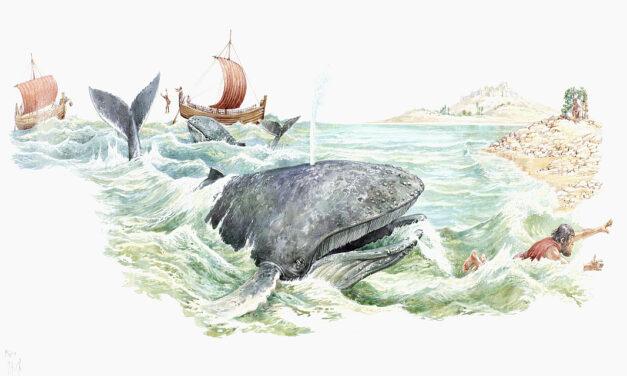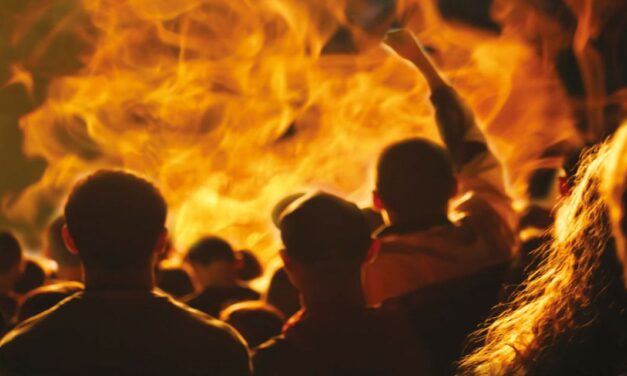On February 28, 1993 at approximately 9:30 a.m., 100 lawmen from the Alcohol, Tobacco, and Firearms division of the United States Treasury Department descended on a religious compound owned and operated by the Branch Davidian cult 10 miles east of Waco, Texas. Their objective was to serve a search warrant for illegal firearms and explosives, and arrest the cult’s leader, David Koresh, on weapons charges. Unfortunately, Koresh and his group had been tipped off and were waiting as authorities approached. Without warning, gunfire erupted and law enforcement officials found themselves facing cult members armed with explosive devices, military assault rifles, and other semi-automatic weapons. The sound of massive firepower echoed in the compound for 45 minutes, ending only after law enforcement personnel had retreated to safety. When the violent confrontation was over, two federal agents lay dead, and 19 others lay injured; two with gun shot wounds so severe they would die within hours at nearby hospitals.
How It All Began
The way David Koresh’s cult came into existence is a long and sometimes complicated story. It began with a man named Victor Houteff, who in 1929/30 was disfellowshipped from a Los Angeles Seventh-day Adventist church for sharing “divergent views” with other church members.1 Houteff, a self-proclaimed messenger of God,2 responded to the expulsion by crystallizing his “divergent views” and presenting them to the public in The Shepherd’s Rod Vol. 1 (published in 1930) and The Shepherd’s Rod Vol. 2 (published in 1932).3
The purpose of Houteff’s first book was “to reveal the truth of the 144,000 mentioned in Revelation 7” and “bring about a reformation among God’s people.”4 He described his second volume as “a complete symbolic revelation of the entire world’s history, both civil and religious.”5 These two works served as the basis of Houteff’s theology, hence, the original name of his group — the Shepherd’s Rod Seventh-day Adventists.
In 1935 Houteff led 12 of his followers to Mt. Carmel, Texas in order to set up what was suppose to be only a temporary gathering place for the 144,000, their ultimate destination being Palestine, where they believed they would not only direct the final work of the gospel prior to the second coming of Christ, but also assist in establishing the new Davidic kingdom.6
Although the Shepherd’s Rod tried for many years to remain affiliated with the Seventh-day Adventists, Houteff in 1942 decided to make a clean break from the mainline denomination by officially forming the Davidian Seventh-day Adventists Association “complete with membership certificates and ministerial credits.”7 The name “Davidian” came from Houteff’s belief that he was the antitypical “David”8 (When something in Scripture is referred to as a “type,” that means it is a foreshadow of something in the future. An “antitype” is that future thing itself. For example, the sacrificial systems of the Old Testament served as a “type” for the sacrificial death of Christ [the “antitype”].)
The Davidians ended up staying in Mt. Carmel for 20 years during which time the sect reached their largest membership of approximately 10,000 worldwide,9 with as many as 125 living at the Mt. Cannel headquarters.10 In 1955 Houteff died and the mantle of prophetic leadership fell to his wife Florence.
The End of Houteff’s Davidians
The beginning of the end for Houteff’s group occurred when Florence made an official call for the faithful to gather at Mt. Carmel during the week of April 16 to April 22, 1959. According to Florence, April 22 would mark the end of the 1,260 days mentioned in Revelation chapter 1111 as well as the beginning of the judgments listed in Ezekiel chapter 9.12 The day was also suppose to witness God’s clearing out of all the Jews and Arabs from Palestine,13 the ushering in of the Davidic kingdom,14 and possibly the second coming of Christ.15
In response to Florence’s announcement more than 1,000 “true believers” sold all their possessions, gave their money to the church, and gathered at Mt. Carmel. Their only reward was to see April 22 come and go.l6 The result of Florence Houteff’s failed prophecy was the disillusionment of many believers who either left the Davidian movement altogether, or joined one of the several factions that broke off from the main sect. By the late 1960’s Houteffs original group had, in effect, ceased to exist.
The “Branch” Davidians
The largest faction resulting from the disintegration of Houteff’s sect remained near Mt. Carmel and was led by a man named Benjamin Roden, who claimed that his arrival at Mt. Carmel on April 22 was the “sign” Houteff’s followers had been waiting for.17 Roden named his faction the Branch Davidians and declared himself to be the one sent by God to deliver the message of the fifth angel spoken of in the Book of Revelation.18
When Ben Roden died in 1978, Branch Davidian leadership was assumed by Ben’s wife Lois (the one who would deliver the message of the sixth angel of Revelation).19 When Lois passed away in 1986, George Roden (son of Lois and Ben) took over.
George Roden, like his parents, believed himself to be a divinely appointed messenger of God, the one, in fact, who would deliver the message of the apocalyptic seventh angel.20 According to George, he had inherited what he called “the divine seal and crown” and his message would be a last warning in the final days — one directed to a world on the brink of seeing the fulfillment of God’s judgments as proclaimed in Ezekiel chapter 9.21 George eventually claimed he was the messiah22 and the son of Christ.23
The Rise of Vernon Howell (a.k.a. David Koresh)
Vernon Howell (hereafter referred to as David Koresh) arrived at the Branch Davidian compound in 1981 after being disfellowshipped from a Tyler, Texas Seventh-day Adventist church. Although well received by nearly everyone at the Davidian commune, Koresh did not get along with George Roden, some saying that conflict between the two started as early as 198324 (the year Koresh first claimed to be inspired of God).25
The Davidian commune soon began to experience internal strife due to the rivalry between Koresh and Roden. Then Koresh suddenly left the commune and settled in Palestine, Texas, where he was joined in 1985 by Branch Davidians who had been run off of the Branch Davidian compound at gunpoint by Roden. Koresh and his followers remained in Palestine for nearly 2 years, living in scarcely more than cardboard and plywood shacks until late 1987 when the conflict between Koresh and Roden culminated in a gunfight.
The heavily publicized shoot-out occurred when Koresh and several armed men made a night raid on the compound where Roden was still living. Koresh and seven of his followers were subsequently arrested and charged with attempted murder because Roden claimed that Koresh and the others were trying to kill him. Koresh maintained that he and the other men were there only to take a photograph of a body that Roden illegally exhumed. Roden had apparently challenged Koresh to resurrect the body, stating that whoever could resurrect it would be the prophet of the group.26
The bizarre trial that resulted from this incident ended with Koresh and his cohorts walking from the courtroom as free men. Roden, on the other hand, was given a six-month jail term27 for filing a legal brief in which he threatened to call AIDS upon the justices of the Texas State Supreme Court.28
When Roden began serving his sentence in January of 1988, Koresh and his disciples were handed a long-awaited opportunity to take over the Branch Davidian compound, the site of their bloody 1993 clash with the law. (For an overview of Branch Davidian history, see the chronological chart at the end of this statement.)
The Branch Davidians- Doctrinal Beliefs
Branch Davidian doctrines fall into three basic categories: first, those which seem to be a result of the cult’s Seventh-day Adventist roots (these came through Houteff); second, those originating with the Rodens; third, those that came through David Koresh (by either “divine revelation” or misinterpretation of the Bible).
The first category would include:
- sabbatarianism (the belief that the seventh-day Sabbath must be observed).29
- vegetarianism30 (although not all Seventh-day Adventists are vegetarians).
- abstinence from alcohol, tobacco, and non-medicinal drugs.31
- an excessive preoccupation with prophecy.
Although number four above cannot technically be considered a doctrine, it is an important aspect of the mindset of Branch Davidian members. Furthermore, since Branch Davidian membership is largely made up of former Adventists, it would probably be safe to assume that the Davidian cult’s obsession with prophecy is in some way directly linked to the mainline denomination’s affinity for, and occasional overemphasis on, prophetic passages of Scripture.
Doctrines originating with the Rodens include:
- Christians must keep the feast days of Old Testament Israel, including Passover, Pentecost, the Day of Atonement (although no sacrifices are made), and the Feast of Tabernacles.32
- The Holy Spirit is female.33
- Lois Roden was the incarnation of the Holy Spirit.34
The teachings of David Koresh caused the beliefs of the Branch Davidian cult to withdraw even further from the realm of orthodoxy. The following doctrines came from Koresh:
- The King James Version (KJV) is the only true and uncorrupted translation of the Bible.35
- Koresh is the only one who can interpret Scripture.36
- Koresh is the antitypical David.37
- Koresh is the antitypical Cyrus (Koresh is Hebrew for Cyrus) of Isaiah 45, and so everything Koresh does is led by God (based on the KJV rendering of Is. 45:13).38
- David Koresh is the Lamb of Revelation 6.39
- All females in the commune belong to Koresh, including all married women (this was a 1989 revelation).40 Some of his “wives” have been as young as 12 years old.
- Koresh is Jesus Christ.41
Obviously, the Branch Davidians have departed radically from the essential doctrines of the Christian faith. In fact, Koresh’s heretical teachings actually number far too many to list in this brief statement. Even the very nature of the godhead has been perverted by Koresh in a most unusual way. According to Koresh, God is not a triune being (Father, Son, and Holy Spirit), but is a foursome (Father, Mother, Son, and Daughter). The Mother of the godhead is the Holy Spirit. The Daughter of the godhead is the Holy Ghost (KJV) who will be incarnated as Koresh’s eternal perfect mate when he is glorified (she will come out of his side like Eve came out of Adam).42
Given the above facts, Koresh’s Branch Davidian group easily fits the theological definition of a cult. It also fits the sociological definition, given the stories told by ex-members who claim to have seen the following (all of which represent classic marks of a cult from a sociological perspective):
- extreme child abuse (e.g. physical beatings until child is bruised and bleeding, and isolation).43
- beatings of disobedient members.44
- severe food deprivation as punishment.45
- outside family ties severed.46
- sleep deprivation of members.47
- the use of fear and intimidation against members who disagree with Koresh.48
- isolation from ex-members.49
Conclusion
The Branch Davidian cult proved to be an extremely destructive group when nearly 100 of its members died in a fire that consumed their compound on April 19, 1993. Numerous individuals involved in it had already been subjected to beatings, sexual abuse, emotional trauma, mental torture, and spiritual ruin. Whether or not the events of 1993 in Waco, Texas will entirely mark the end of the Branch Davidian cult remains to be seen. Consequently, CRI will continue to closely monitor the activities of those who survived the tragedy that took place.
Chronological Chart of Branch Davidian History
DATE — EVENT
1929/30 — Victor Houteff is disfellowshipped from a Seventh-day Adventist church in Los Angeles.
1930 — Houteff publishes The Shepherd’s Rod Vol. 1.
1932 — Houteff publishes The Shepherd’s Rod Vol. 2.
1935 — Houteff leads 12 of his followers to Mt. Carmel, Texas
1942 — The Shepherd’s Rod Seventh-day Adventist group becomes the Davidian Seventh-day Adventist Association.
1955 — Victor Houteff dies, and his wife Florence becomes the group’s leader. Soon afterwards, Florence issues a prophecy marking April 22, 1959 as “the end.”
1959 — More than 1,000 Davidians gather at Mt. Carmel Texas between April 16 and April 22. On April 22 nothing happens and Houteffs group begins to disintegrate. One break-away faction is led by Ben Roden who names his group the Branch Davidians.
1977 — Lois Roden allegedly has a vision which reveals to her that the Holy Spirit is female.
1978 — Ben Roden dies and Lois Roden assumes control of the Davidians.
1981 — Vernon Howell (David Koresh) is disfellowshipped from a Tyler, Texas Seventh-day Adventist church and moves to the Davidian compound.
1983 — Koresh claims to be divinely inspired and friction continues to develop between him and Lois Roden’s son George.
1984/5 — Koresh leaves the commune and moves to Palestine, Texas.
1985 — Numerous Branch Davidians are run off the Branch Davidian compound at gunpoint by George Roden.
1986 — Lois Roden dies and George takes over the compound and claims leadership of all Davidians world-wide.
1987 — A shoot-out takes place between Roden and Koresh.
1988 — Koresh and others involved in the 1987 gun battle are acquitted of all charges. Roden is imprisoned, allowing Koresh and his disciples to take over the compound. Koresh is now the undisputed leader of the Branch Davidians.
2/28/93 — Lawmen and Branch Davidians engage in a 45-minute gun battle.
4/19/93 — The Branch Davidian compound burns to the ground, killing nearly 100 cult members including David Koresh.
Notes
- Statement by the General Conference of Seventh-day Adventists, 3/2/93, p. 1
- J. Gordon Melton, Encyclopedia of American Religions, p. 565
- Ibid.
- Victor Houteff, The Shepherd’s Rod Vol. 1, Introduction
- Victor Houteff, The Shepherd’s Rod,Vol. 2, p. 10
- J. Gordon Melton, Encyclopedia of American Religions, p. 565
- Ibid.
- Statement by the General Conference of Seventh-day Adventists, 3/2/93, p. 1
- 9. Dallas Morning News, 11/15/87, p. 47A
- J. Gordon Melton, Encyclopedia of American Religions, p. 565
- Ibid.
- Statement by ex-member Marc Breault, 5/27/91
- J. Gordon Melton, Encyclopedia of American Religions, p. 565
- Ibid.
- Dallas Morning News, 11/15/87, p. 47A
- Ibid.
- Ibid.
- Ibid.
- Ibid.
- Ibid.
- Ibid.
- Waco Tribune-Herald, 4/26/88, p. 8A
- Waco Tribune-Herald, 4/14/88, p. 1C
- Waco Tribune-Herald, 1/17/93 p. 8A
- Statement by the General Conference of Seventh-day Adventists, 3/2/93
- Waco Tribune-Herald, 1/17/88 p. 8A / Confirmed by ex-Branch Davidian member David Bunds, interviewed 3/4/93
- Waco Tribune-Herald, 4/14/88 p. 1C
- Waco Tribune-Herald, 1/17/88 p. lA
- Dallas Morning News, 11/15/87, p. 47A
- Ibid.
- Ibid.
- Statement by the General Conference of Seventh-day Adventists, 3/2/93, p. 2
- Ibid.
- Statement by ex-member David Bunds, interview 3/5/93
- Statement by ex-member Marc Breault, 5/27/91, p. 13
- Statement by ex-member Marc Breault, 5/27/91, p. 16
- Statement by ex-member Marc Breault, 5/27/91, p. 11
- Statement by ex-member Marc Breault, 5/27/91, p. 11-12
- Statement by ex-member David Bunds, interview 3/5/93
- Ibid.
- Statement by the General Conference of Seventh-day Adventists, 3/2/93, p. 4
- Statement by ex-member David Bunds, interview 3/5/93
- Statement by ex-member Marc Breault, 5/27/91, p. 18-19
- Ibid.
- Ibid.
- Ibid.
- Ibid.
- Statement by ex-member David Bunds, interview 3/5/93
- Statement by ex-member David Bunds, interview 3/5/93








